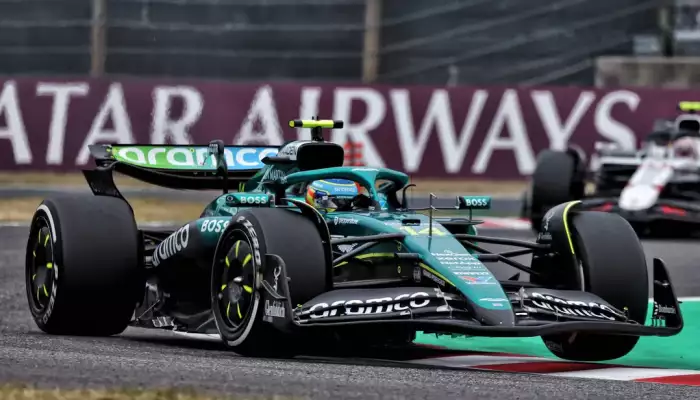
BEIJING: Few engineers have shaped Formula 1 like Andy Cowell. As head of Mercedes' powertrain division, he helped create the engine that powered the Silver Arrows to seven consecutive Constructors' Championships between 2014 and 2020 - an era of dominance that redefined what technical excellence looked like.
So when Cowell returned to F1 after four years away, it was reasonable to assume he'd join another top team. Instead, he chose Aston Martin - a squad with serious ambition but a middling track record. Why?
"I missed Formula 1," Cowell told Xinhua before the Japanese Grand Prix at Suzuka. "I love the industry and the high pace of performance development, and Lawrence's vision to take a team that had fallen into administration and chart the journey to the top of the sport is a great challenge to be part of."
'Lawrence' is Lawrence Stroll, the Canadian billionaire and fashion mogul who purchased the cash-strapped outfit known as Racing Point in 2018. Since rebranding it as Aston Martin, Stroll has poured money into expanding infrastructure, attracting top talent, and laying out a multi-year plan to reach the front of the grid.
A NEW KIND OF CHALLENGE
But five years into the project, results remain elusive. A promising start to 2023 gave way to a lackluster 2024, prompting the removal of technical director Dan Fallows and the demotion of ex-team principal Mike Krack, whose place Cowell has taken.
However, despite hiring Cowell and luring legendary designer Adrian Newey away from Red Bull, Aston Martin remains mired in F1's lower midfield, sitting only eighth in the Constructors' championship after four races of 2025.
Stroll's hands-on approach - "phone calls every other day, visits to the factory each week," - has made him one of the sport's most involved team owners. But there's a growing sense that the team needs more than investment and energy.
"For a long time, success for this team was just surviving a season," Cowell says. "Now the target is to reach the front of the grid. That requires a completely different mindset."
In leading the transformation from underdog to polished contender. Cowell's task goes beyond engineering. "It's about understanding what makes the fastest race car, and how to align the whole organization around that."
At Mercedes, Cowell fit into a finely-tuned operation. At Aston Martin, he's helping construct one from the ground up, all while trying to stay competitive. It's a balancing act many teams struggle with, especially in F1's tightly congested midfield, where fractions of a second can separate glory from anonymity.
ALL ROADS LEAD TO 2026
Despite an underwhelming set of results so far in 2025, much of Aston Martin's current focus is aimed at 2026, when the sport undergoes a major technical reset. That year, Aston Martin will also become a full works partner with Honda, installing a power unit tailored to their chassis and developing their own transmission for the first time. It's a technical leap that could level the playing field, if executed well.
Cowell calls it "a big change point," one that comes with "big expectations and big opportunities." Newey, who joined Aston in March, is already focusing on the 2026 car, contributing to early concept decisions and helping shape the team's long-term design philosophy.
But focusing too far ahead can carry its own risks. While rivals like McLaren and Red Bull continue developing race-winning cars in the present, Aston Martin risks becoming a team in permanent rebuild.
Cowell insists that's not the case. "We're doing everything we can to maximize performance this year," he says, while also building the "tools and methods" needed for the future. He acknowledges the fine line between short-term performance and long-term vision, and that the path isn't always linear.
"There hasn't ever been a moment in my career where I felt we'd reached perfection," he said. "There are always things you can do better."
That relentless pursuit of improvement is also a reflection of F1 itself - a sport where no one waits for you to catch up. The challenge for Aston Martin is that time marches on, and the expectation gap is widening.
The question remains: can Aston Martin emulate Mercedes' title-winning pedigree?
"That's not entirely in our control," Cowell says. "All we can do is improve. Whether we win comes down to our relative performance compared with our opponents. At some point, we'll look up and say, 'we're doing okay.'"
It's a sober answer from someone who's been to the mountaintop and knows how hard it is to get back. For now, Aston Martin is still climbing - still searching for the rhythm, results and reputation of a true contender.